
views
Identifying a Cheetah
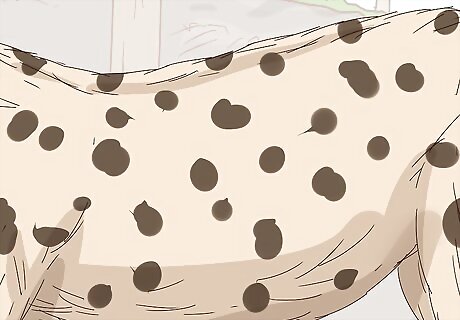
Look for a simple spot pattern. A cheetah's spot pattern on its coat will be relatively simple and won't include any clustered spots. Also, cheetah spots are rather small and thin and are always completely black. Cheetah spots are always completely separate from each other and will not touch. You will also notice that cheetahs have a white underbelly that doesn't have any spots.
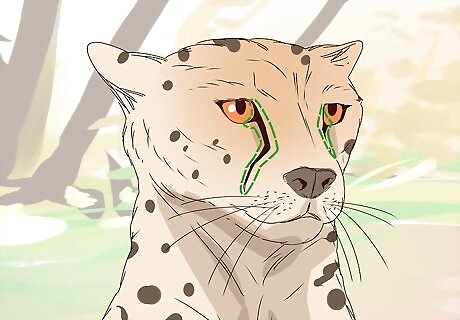
Check for “tear marks” on the cat's face. Cheetahs have black stripes on their faces that run from their eyes all the way down to their mouths. Note that these stripes begin from the inner corner of each eye and not from the outer corner. If you see what appears to be a stripe that begins from the outer corner of a cat's eye, that's more likely to just be dirt.
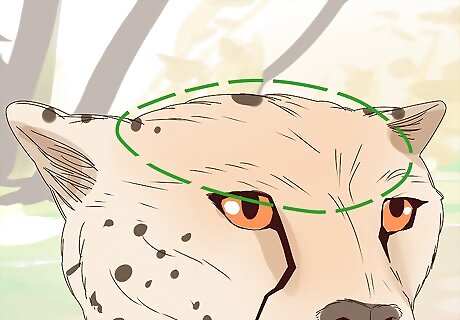
See if the cat has a small, rounded head. Cheetahs have small, rounded heads that are not elongated. Similarly, they also have relatively small ears. Unless you've seen a lot of big cats, you may not notice a cheetah's relatively small ears unless you're directly comparing them to those of another cat.
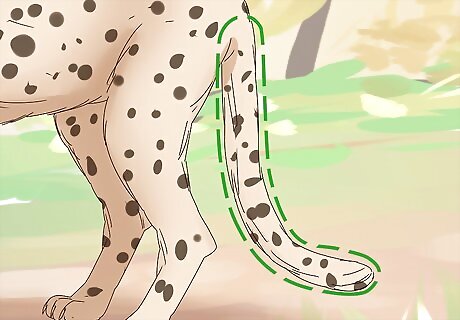
Note if the cat's tail is flat and wide. Cheetahs have flat, wide tails that sort of look like the rudder of a ship. The cheetah's flat tail is built for making sudden, sharp turns in midair, which is useful for a cheetah's hunting practices.
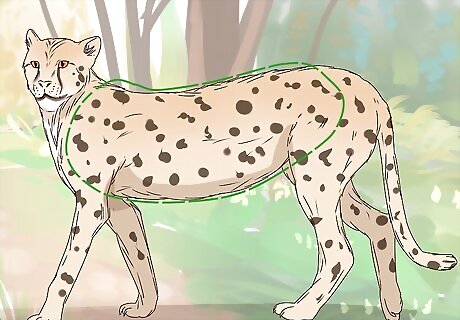
Look for a narrow, lanky body. Cheetahs are narrow, lanky cats whose bodies are built for sprinting. You may also notice that a cheetah's body is relatively lean on muscle, since it's built for speed. The average body weight for an adult cheetah tends to be between 110 and 140 pounds (50 and 64 kg).
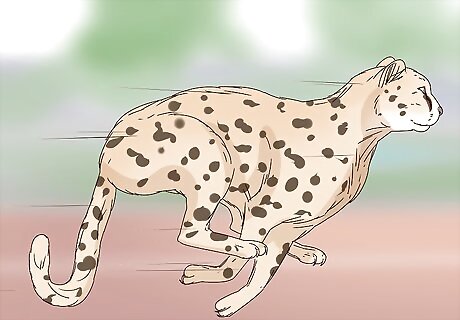
Determine if the cat uses speed to chase down its prey in the daytime. Cheetahs, as you may have heard, are the fastest land animals in the world, which means their primary way of hunting is to simply chase down their prey. They are also diurnal, meaning they are primarily active during the day. Cheetahs can run up to 70 miles (110 km) per hour, so if you see a cat running faster than a car, it's a cheetah.
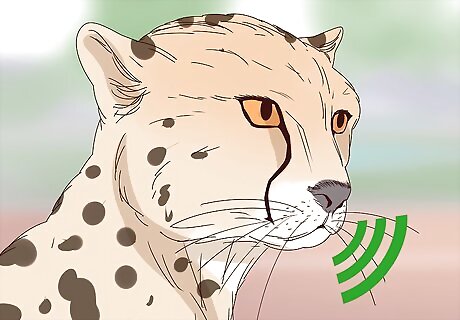
Listen for a purr instead of a roar. Cheetahs, unlike other big cats, are able to purr when they inhale. However, they also lack the ability to roar, which most other big cats can do. Cheetah purrs are pretty similar to the purrs that house cats make, although they're a bit deeper.
Spotting a Leopard
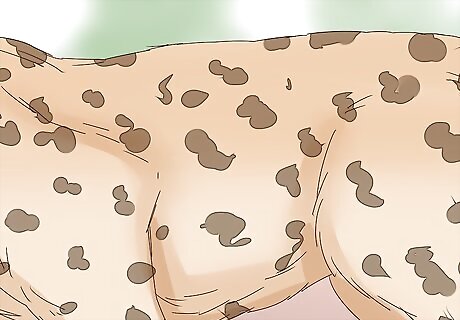
Check for a complex pattern of spots. Leopard spots tend to be in complex clusters that simulate shifting plants and shadows. They also generally look more like roses than circles and hence are called “rosettes.” Leopard spots may also seem to “overlap” and touch each other, thereby creating more complex designs.
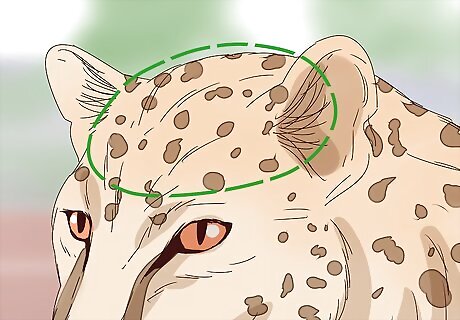
See if the cat has a thin, elongated head. Unlike the round heads of cheetahs, leopard heads tend to be thinner and more elongated. They also lack the distinctive “tear marks” of cheetahs on their faces.
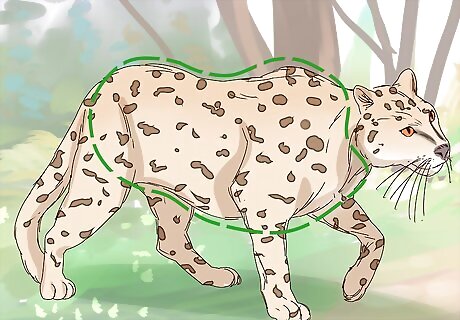
Look for a bulky, muscular body. Unlike lanky cheetahs, leopards are large, bulky animals, who use their stronger bodies to drag their prey up trees where they can eat in solitude. They also have a lot of muscle in their neck and shoulders, which is ideal for pouncing on unsuspecting prey.
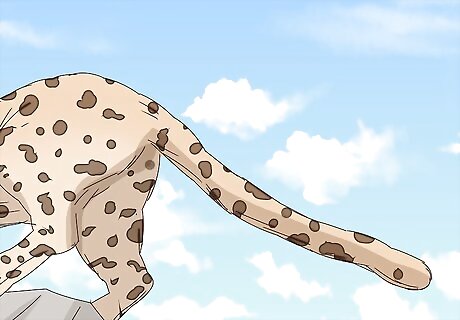
Check if the cat's tail is long and thin. A leopard's tail is longer, thinner, and more tubular than a cheetah's tail. Its tail shape helps it to maintain its balance, which is very important for hauling carcasses up trees or walking on spindly branches high in the air.

Note if the cat stalks its prey at night in order to hunt. Leopards are nocturnal animals and are thus more active at night than during the day. They also primarily rely on stalking and pouncing on unsuspecting animals in order to hunt. This type of behavior makes sense, given the nature of leopard bodies, which are built more for pouncing and sneaking than for running at great speeds.
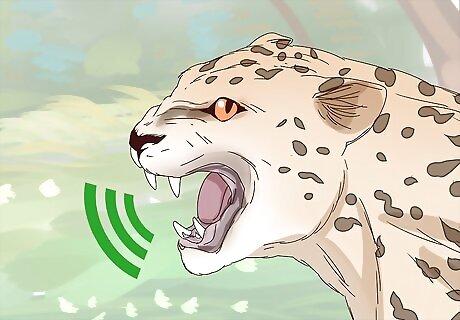
Listen for a roar. Although it can't purr, a leopard (like most other big cats) has a noticeable roar. It can't roar as loud as a lion can, but if it has any roar at all, the cat is a leopard instead of a cheetah.




















Comments
0 comment